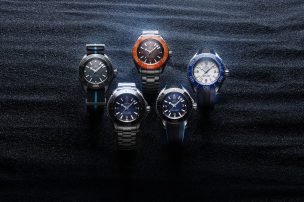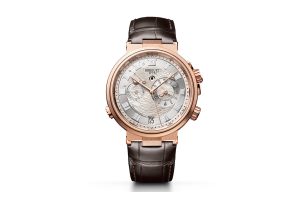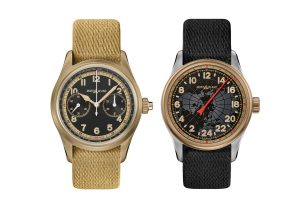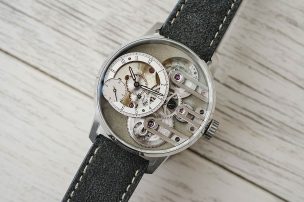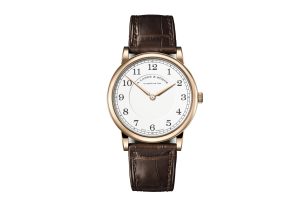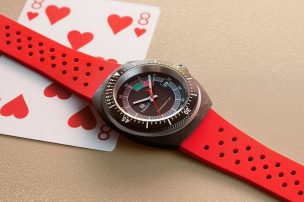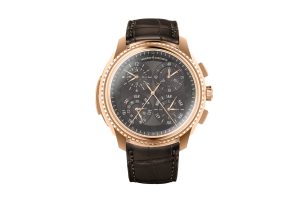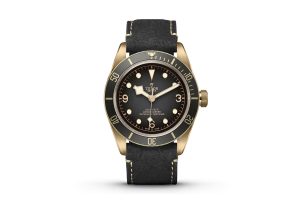
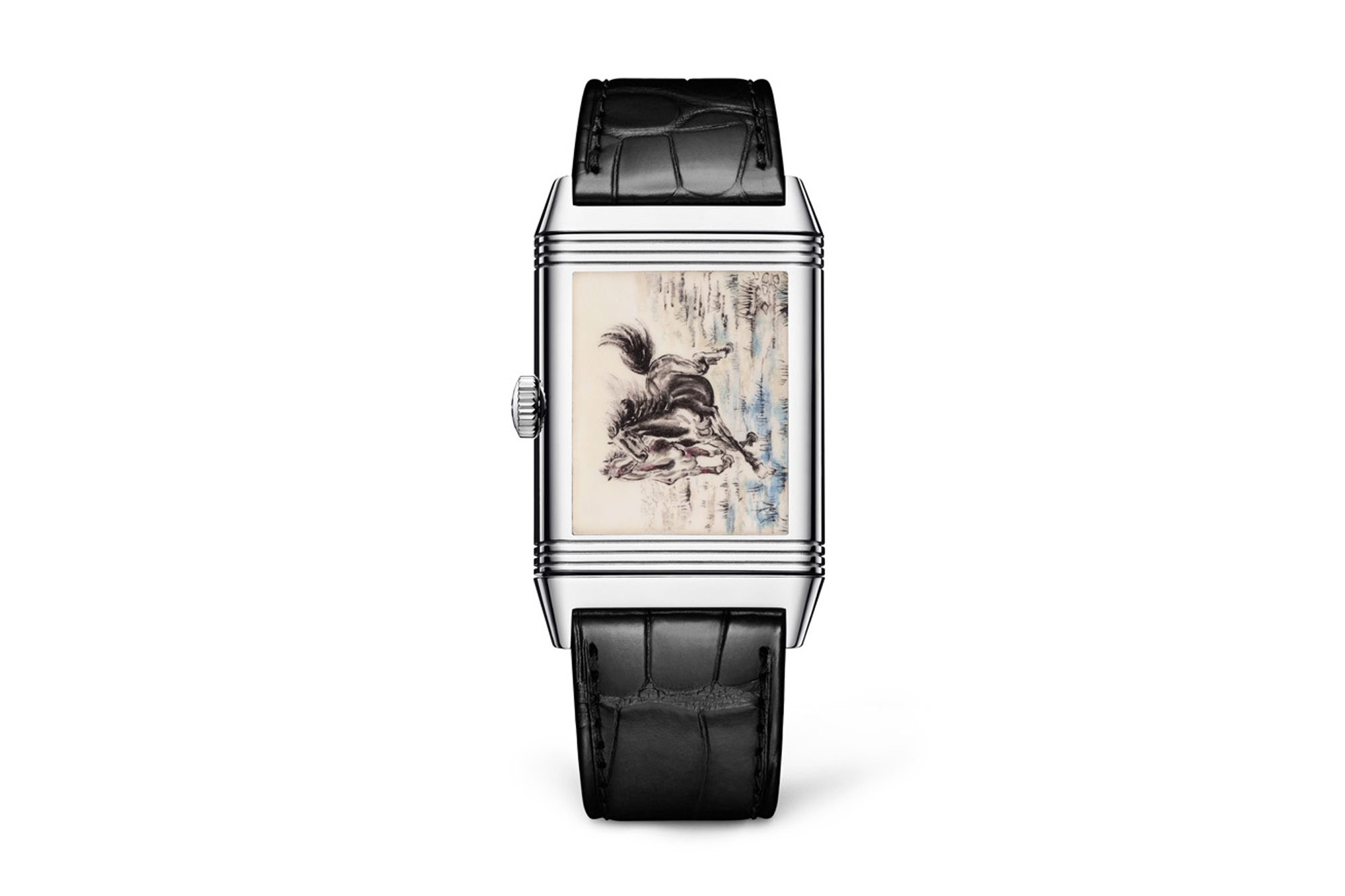
Jaeger-LeCoultre Reverso Tribute Enamel models
The art of enamelling and engraving has been applied by Jaeger-LeCoultre for many years. Now the Swiss label puts this art in a focus with introducing three new models of the Reverso. Therefore the artisans of the brand followed the idea of a model revealing this kind of art on their back. On the front a finely hand-guillochéd dial is located, covered in translucent Grand Feu enamel. But especially the back of the new models is designed in the sense of art. The reverse is decorated with an enamelled miniature of a painting with a particular technique that is representative of an iconic style of art history. Depending on the model it is inspired by pointillism, ink wash painting, or Japanese woodblock printing. Three of their greatest artists were selected through one of their works: Georges Seurat, Xu Beihong and Katsushika Hokusai.
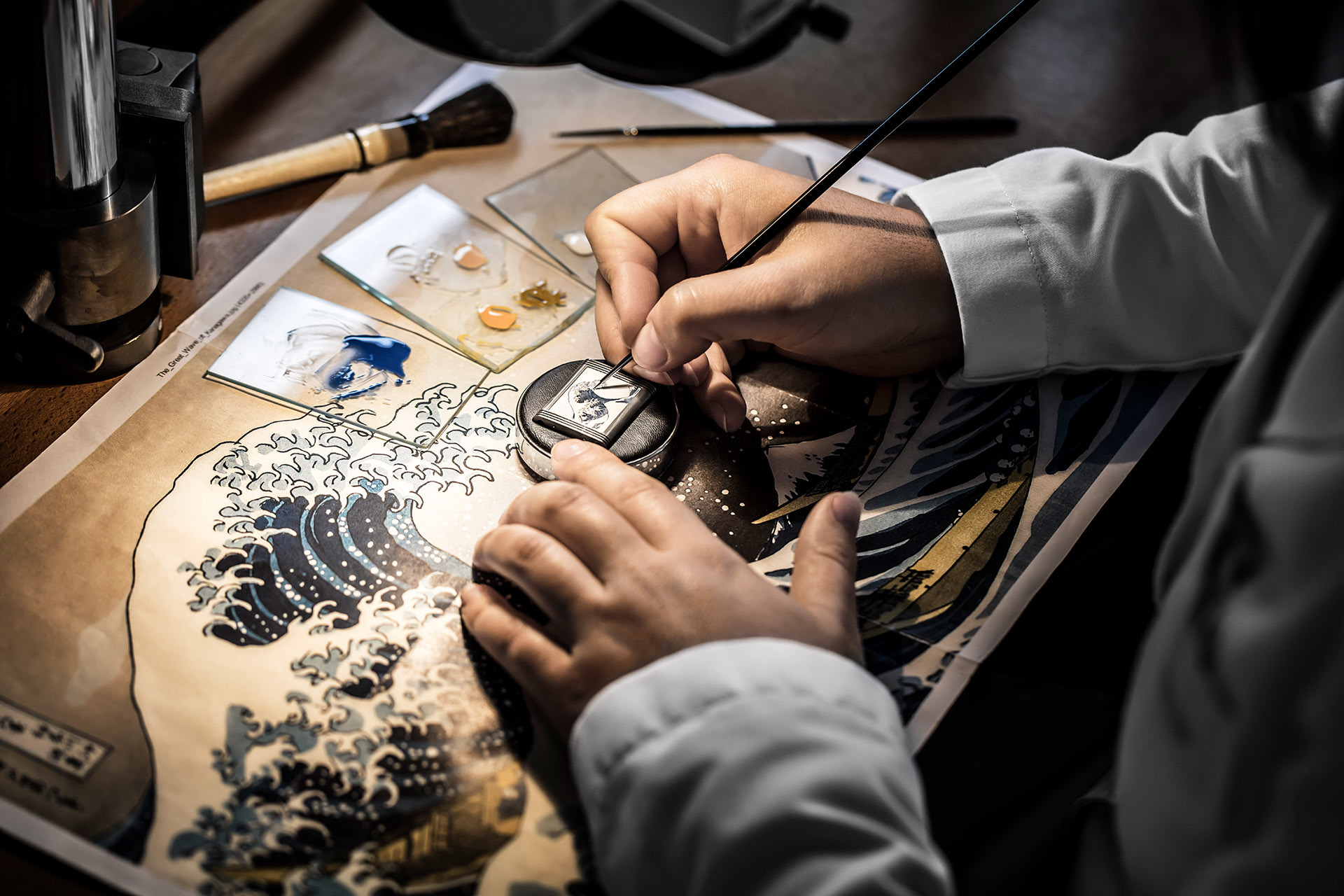
The art of enameling
To put this idea into practice the Reverso Tribute Enamel, with its Art Deco styling from 1931, its facetted and applied indices and its dauphine hands, was chosen. The model was equipped with a case in white gold to host the enamel miniature. Each of these models is issued in an eight-piece limited edition and available in Jaeger-LeCoultre Boutiques.
Reverso Tribute Enamel – Georges Seurat: A Sunday Afternoon on the Island of La Grande Jatte
To decorate the front of this piece (Ref. Q39334C1), Jaeger-LeCoultre’s artisan guillocheurs used a century-old machine. In this model, the dial is guillochéd with small lozenges, which are embossed under a deep green translucent enamel.
This way the front dial already is a piece of complex processing. But when turning over the watch’s case the actual work of art can be seen on the reverse.
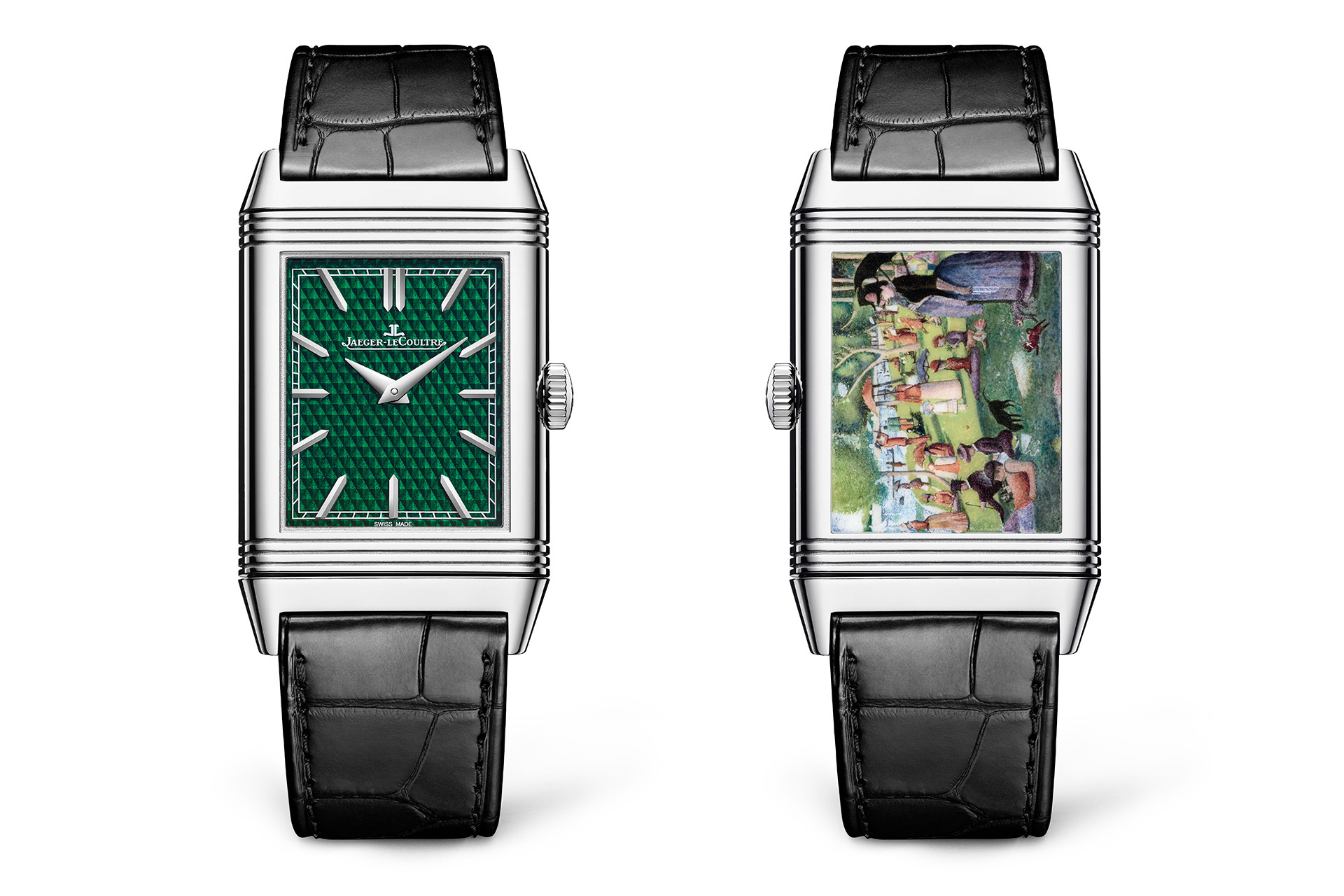
Jaeger-LeCoultre Reverso Tribute Enamle Georges Seurat Ref. Q39334P1
Painted between 1884 and 1886, ‘A Sunday Afternoon on the Island of La Grande Jatte’ is one of the most known examples of the pointillist technique created by Georges Seurat (1859-1891). Seurat, a neo-impressionist French painter, was one of the leading lights of the art world in the 19th century. It took him two years to complete this in original size nearly 2 by 3 metre canvas, for which he drew more than 60 sketches in total. The painting is set on the banks of the Seine, near Paris, in a place where the locals would come to enjoy the water and a pleasant, unspoilt setting. The technique of pointillism consists of juxtaposing minuscule dots of colour, rather than using larger brushstrokes, with the spectator’s eye naturally “mixing” the colours and combing them.
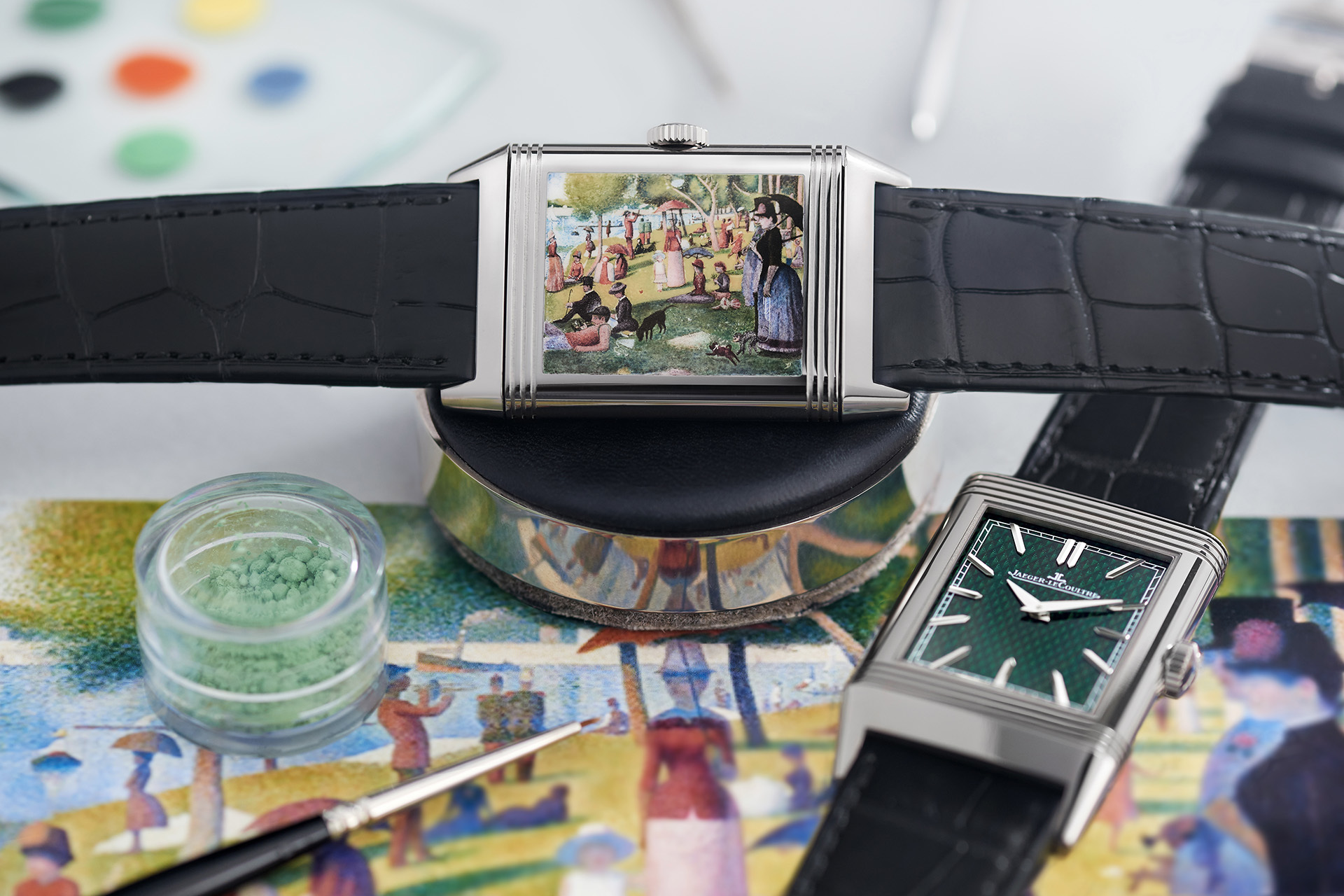
Jaeger-LeCoultre Reverso Tribute Enamle Georges Seurat Ref. Q39334P1
In order to create this miniature, the artisan enamellers from Jaeger-LeCoultre had to reproduce a more than 3-metre-wide painting onto a 3 qcm surface. Therefore the enamellers created their own pointillism technique and tools. Several protective enamel layers are superimposed upon one another after the completion of the painting, altering the intensity of the colour of the piece. A darker shade than the original was used in order to plan for this. In total, more than 70 hours were required to finish this creation.
Reverso Tribute Enamel – Inspired by a painting by Xu Beihong
With this piece (Ref. Q39334C1), the Grande Maison honors the art of ink wash painting.
The dial on the front was guillochéd in lengthwise geometric patterns and covered in opalescent ivory-coloured enamel, optically reminding of the material mother-of-pearl.
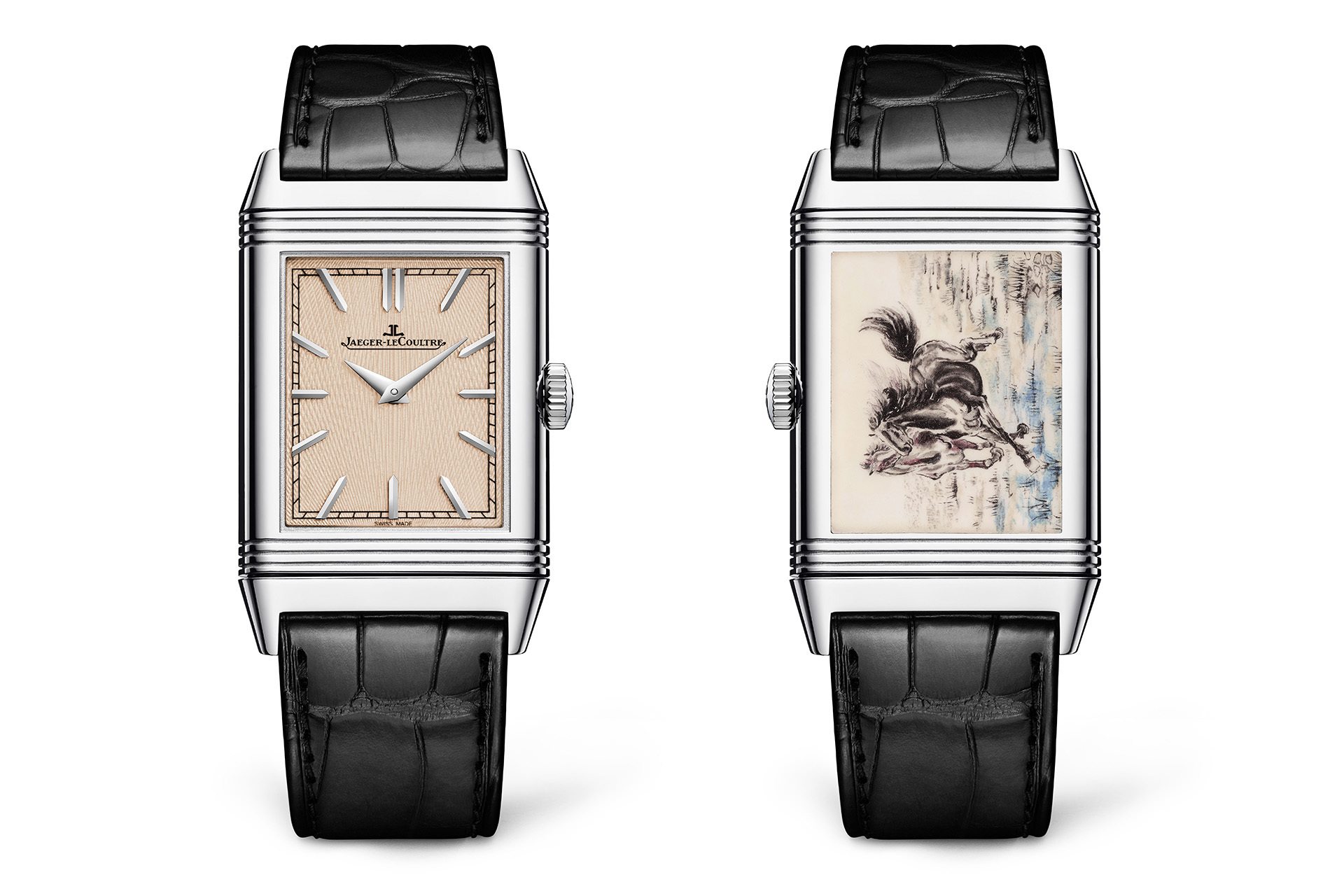
Jaeger-LeCoultre Reverso Tribute Enamel Xu Beihong Ref. Q39334C1
Xu Beihong (1895-1953) was one of the most renowned painters of the 20th century in China. He was known for his oil paintings, drawings, pastels and calligraphy. In China, his representations of horses made him very popular. The original to this model is an over 5-metre-wide painting showing ten horses galloping through a natural Chinese landscape. The enamellers were inspired by the representation of two of the painting’s horses.
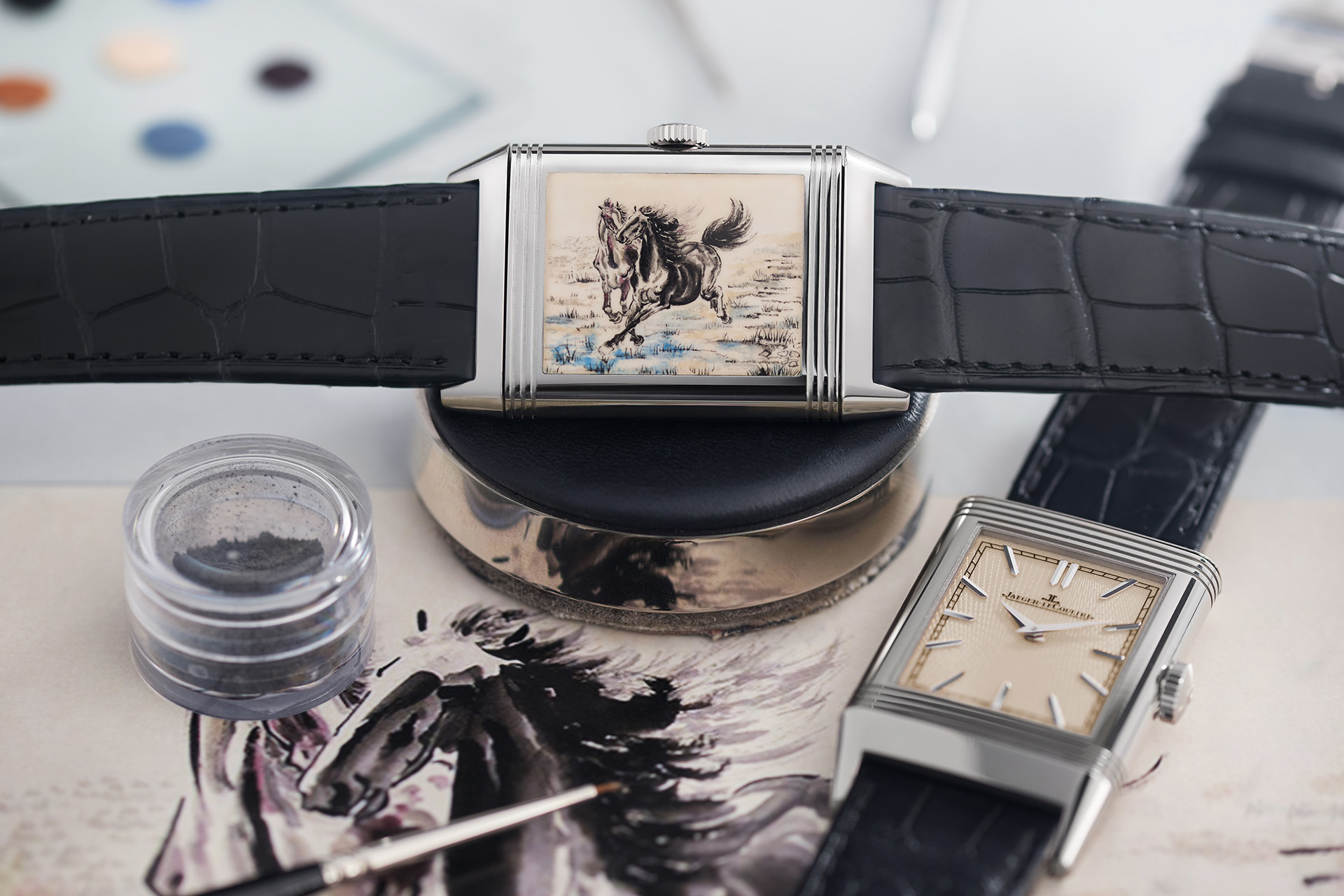
Jaeger-LeCoultre Reverso Tribute Enamel Xu Beihong Ref. Q39334C1
To express the work of art, the sense of movement, the fluidity and the lightness conveyed by the ink wash technique had to be reproduced despite the protective layers of the enamel, which reduce the image’s spontaneity. The artisans had to find the right movement to best represent the horses’ energy. Additionally the smallest details had to be portrayed, such as the horses’ manes. Working practically in monochrome is another challenge for an artist such as an enameller, who is used to playing with colours.
Reverso Tribute Enamel – Katsushika Hokusai, The Great Wave off Kanagawa
For the third model (Ref. Q39334T1) the Jaeger-LeCoultre artisans as well studied the technique of Japanese woodblock printing, which Hokusai is known for.
On the front, the dial is guillochéd with small waves, like an echo of the drawing found on the reverse. It is then covered with a translucent enamel, coloured with a blue as deep as the ocean represented by ‘The Great Wave of Kanagawa’.
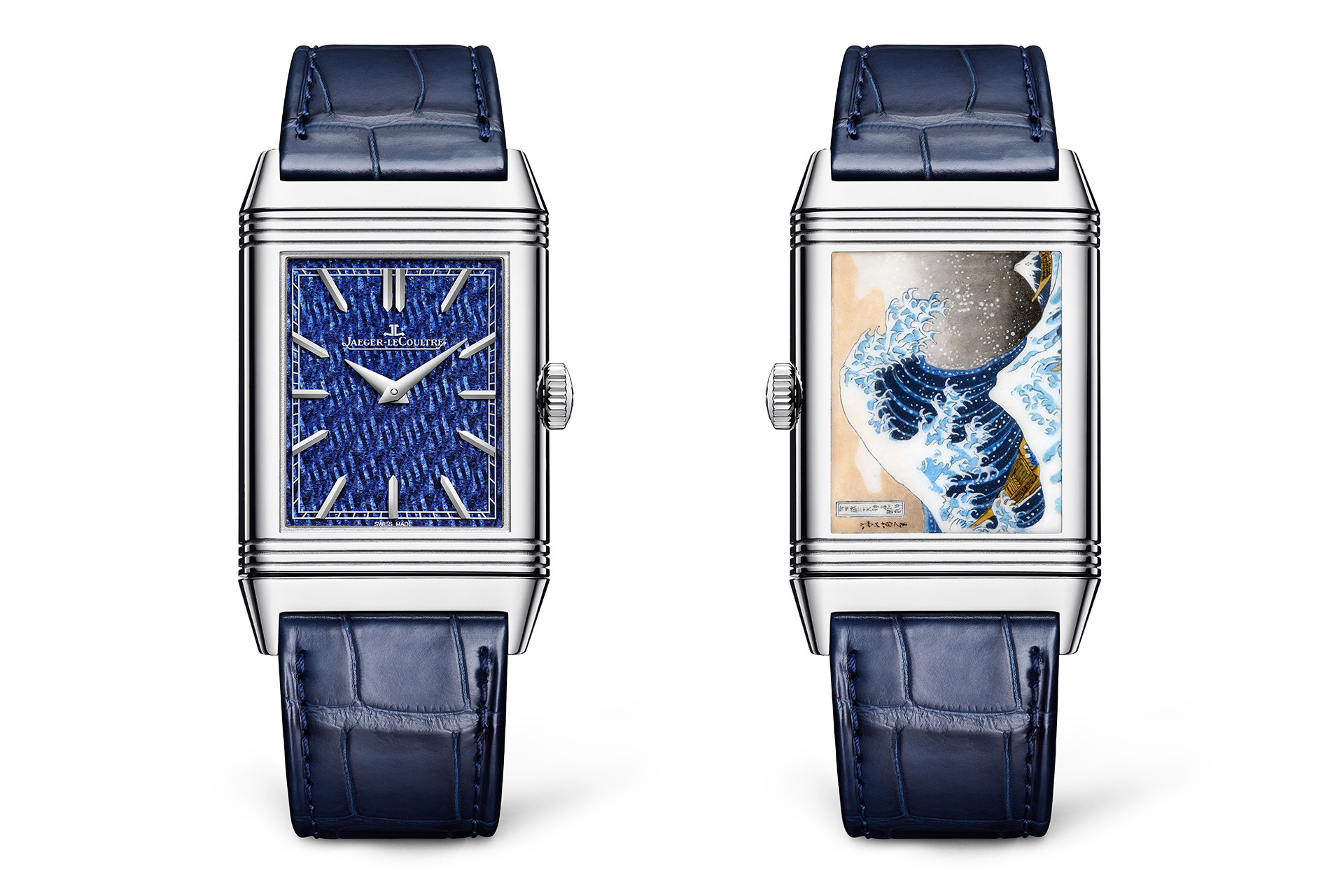
Jaeger-LeCoultre Reverso Tribute Enamel Katsushika Hokusai Ref. Q39334T1
Katsushika Hokusai (1760-1849) was a Japanese artist known for his woodblock print series ‘Thirty-six Views of Mount Fuji’. It is iconic as it was the first time that the concept of perspective, drawn from Western painting, was integrated into the Japanese tradition of art. This series as well included ‘The Great Wave of Kanagawa’, which made the artist famous worldwide. This piece inspired Jaeger-LeCoultre’s master enamellers for the decoration of the reverse of this Reverso Tribute Enamel.
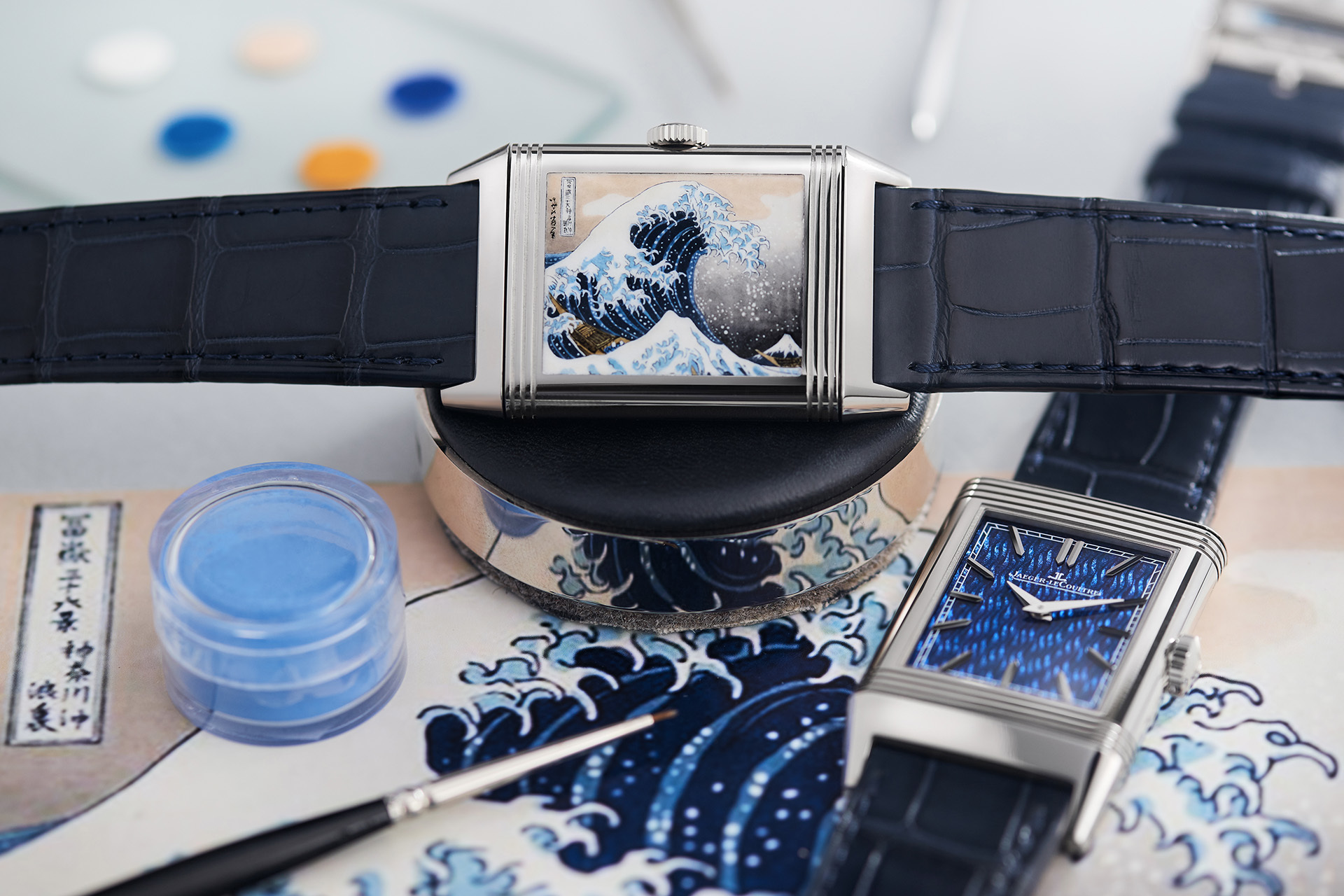
Jaeger-LeCoultre Reverso Tribute Enamel Katsushika Hokusai Ref. Q39334T1
It was necessary to plan in order to achieve the desired colour as well as the tiniest elements which create the movement of the waves and the splashes of foam, without which the piece would lose its character and strength. The attention to detail was certainly a challenge. The reproduction of a calm and smooth sky, without a single brushstroke appearing, also was a challenge to the creators. As such, this work presents the difficulties of the two preceding creations.
